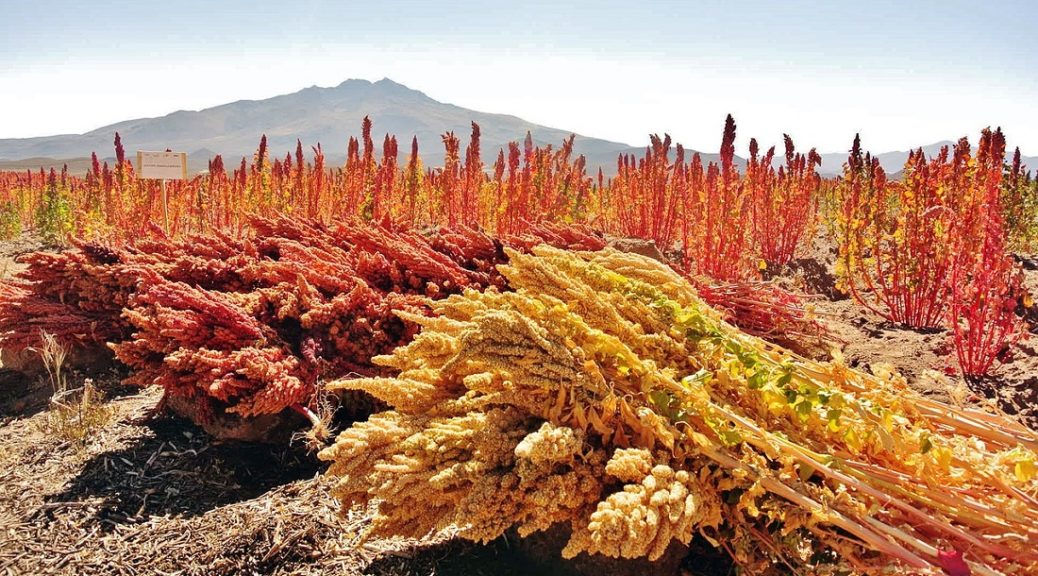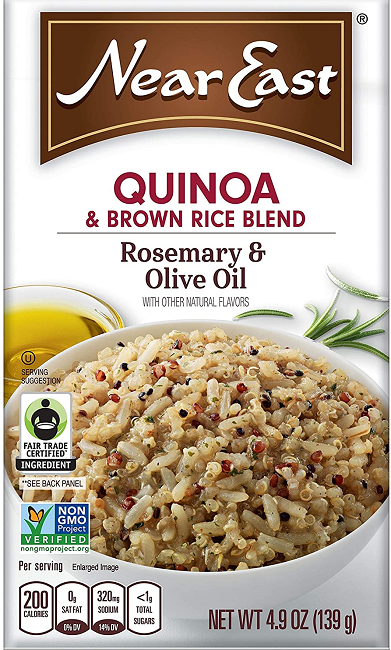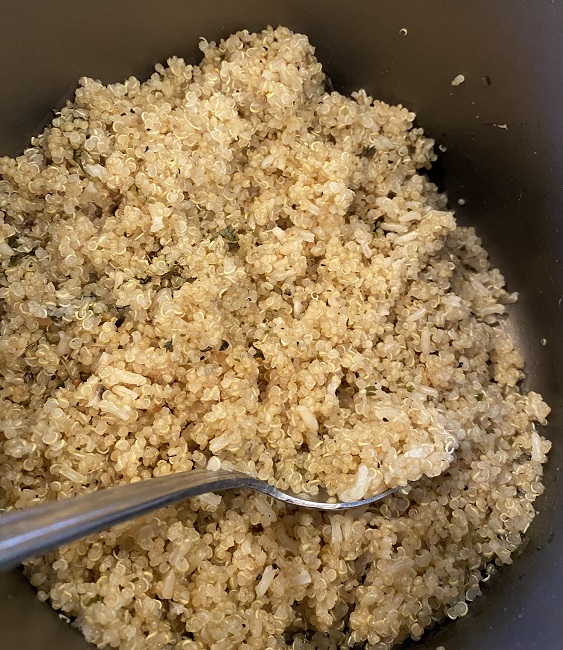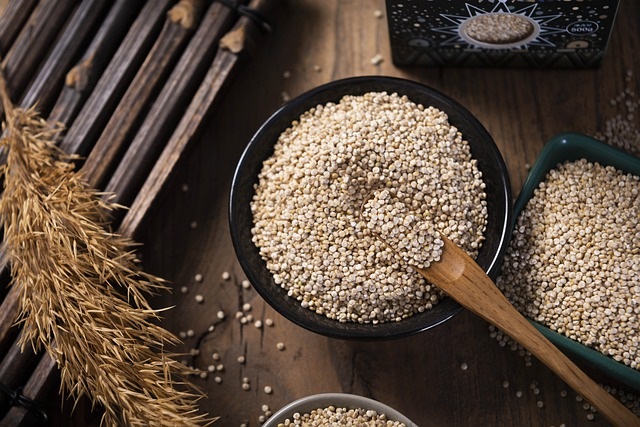I have a problem with quinoa.
No, it’s not the spelling or the pronunciation – (KEEN-wah).
It’s the texture – or that its texture is so loose and not stuck together, which makes it seem too light, fluffy, and not substantial.
Oh, they make sticky quinoa just like sticky rice; but, for me, it’s too sticky.
Now I sound like Goldilocks. Too loose. Too sticky. Searching for the middle ground.
When my sweetheart showed me his favorite quinoa at the store, we bought and prepared it for dinner that night. Just like Goldilocks, this one was just right.
What was the difference?
The Near East brand he liked was a mixture of both quinoa and brown rice and offered the perfect blend of herbs and spices.
Voila and Eureka!
But I didn’t like buying a small box of the stuff every time I wanted savory quinoa. I have giant bags of quinoa and brown rice at home; so, all I had to do was duplicate the spice blend.
After snapping a picture of their ingredients list on the box, I set out to create my own version of their recipe for yumminess and texture.
I know labels start with the largest quantities of ingredients and in descending order, continue to the least. That list gave me a hazy road map – the rest was up to me.
Ingredients: Quinoa**, parboiled long grain brown rice, salt, maltodextrin, yeast extract, onion powder, garlic powder, dried rosemary, dried parsley, tomato powder, dextrose, sugar, citric acid, spices, tapioca maltodextrin, natural flavor, sunflower oil, olive oil, tocopherols – preservative.
Clearly, some items were never going to be in my version: maltodextrin, yeast extract, dextrose, citric acid, tapioca maltodextrin, natural flavor, (highly processed) sunflower oil, and tocopherol preservatives. I also had plans to replace the sugar with a pinch of erythritol and monk fruit sugar alternative.
Did you know that according to Better Homes and Gardens magazine, “natural flavor” is a mystery ingredient defined by the FDA as:
“a substance extracted, distilled, or similarly derived from natural sources like plants, (fruits, herbs, veggies, barks, roots, etc.), or animals, (meat, dairy products, eggs, etc.), via a method of heating, with its main function in food being flavoring not nutritional.”
Why am I not leaping for joy?
As for the tomato powder, I’ve never had any. Is it a thing? But I found a tomato/basil seasoning blend recently and will be using it as I prepare for this post. We’ll see how it works out.
On to my concept recipe with no measurements for the spices:
Nearly East Quinoa and Brown Rice with Olive Oil
In a saucepan put:
- 2/3 cup/ 156 ml quinoa – rinsed in water and drained to reduce the anti-nutrient content
- 1/3 cup/ 78 ml brown rice
- 2 cups/ 473 ml water
- Salt
- Onion powder
- Garlic powder
- Crushed dried rosemary
- Dried parsley
- Optional pinch of sugar or erythritol
- Additional spices/herbs that may contain:
- Dried tomato flakes
- Dried basil
- Dried oregano
Give everything a good stir, bring to a boil, reduce to a simmer, cover with a lid, and cook until all water has been absorbed.
We have been totally satisfied with the results of combining two parts quinoa, with one part brown rice, along with this assortment of spices and olive oil.
It’s also more economical to easily duplicate this mix from what is already in your cupboard than buy it pre-done.
This quinoa/rice blend is a handy side dish and makes a nice addition sprinkled cold on a salad or added to a breakfast bowl instead of grits.
It’s an ancient grain once considered to be sacred by the Incas.
Really a seed, quinoa is prepared the same way grains are. Full of protein, nutrients, and fiber quinoa is also gluten-free and contributes to an anti-inflammatory diet. Rinsing before cooking reduces the elements that prevent our absorption of key nutrients.
Note: If you have chronic kidney stones, the oxalates in quinoa could contribute to stone formation.
The fiber, protein, and a host of nutrients make quinoa a smart carbohydrate to incorporate into your diet. Adding brown rice to the mix doubles down on the high fiber and nutrients.
Both grains can contribute to balancing of blood sugar levels, weight loss, regularity, and reducing cholesterol. What’s not to like?
Click on the subscribe area at the side of your computer screen or at the very bottom of your phone scroll to make sure you won’t miss a single post.
If you found this of value, please share using the options in the MORE button below.
In health-
Deidre
As an Amazon Associate, I earn from qualifying purchases.








